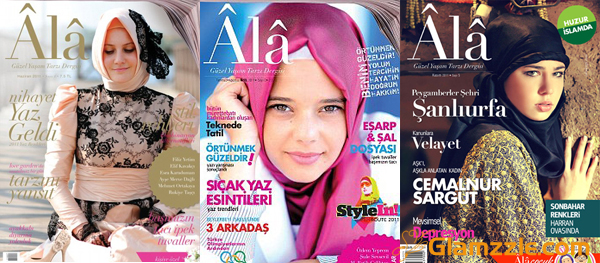
What defines someone? Well, that question is very difficult because there are many things that define someone. People have unique personalities that can be expressed through what they wear—since others cannot look inside our brains, we rely on our external appearance to convey a message to the public. Through social media and the news, various cultural groups are depicted in multiple ways; ways that are not always positive. For example, the word “Islam” is associated with a lot of negative connotations. Words such as “extremist”, “conservative”, or “sexist” may come to mind. One cause of these misconceptions is the media. Although some of these words apply to certain Islamic extremists, they do not apply to every Muslim of the world. In countries where most citizens are Muslim, there is a balancing act between honoring traditional Islamic values and keeping up with the constantly changing/advancing world. This balancing act can be approached in multiple ways. For example, change occurs in every aspect of someone’s life from their clothes to their ideologies and values. In the scope of Islam and modernity, Islam has made itself known in an area that is well-versed in European countries as well as the United States – the fashion industry.
Turkey is a country undergoing modernity, in an unusual way; it is able to maintain important Islamic values while giving women the option to express their individuality through fashion. A marker of Islam and women is the veil—the veil is a representation of modesty as well as a means to express one’s religion. Ala is a high-fashion magazine in Turkey that caters to Islamic women’s fashion—in Monique Jaques’ photo-journal article regarding Islamic fashion, it is referred to as “Vogue of the veiled” by the press. By being associated with a renowned fashion magazine, it is seen that Ala successfully achieved its goal of creating fashion that both honors and praises Islam. Brands such as Hermes and Louis Vuitton produce scarves that are used as a hijab thus showing that highly respected, and known around the globe, are not abiding to commonly held stereotypes about veiling. For example, there is a notion that veiling prevents a woman from freely expressing herself. Additionally, these commonly held stereotypes about veiling are dissolved—in Anwar Ghazala and Liz McKay’s article, Veiling, they state that “when in public, women are asked to draw their jilbab (cloaks) over them so they may be identified as respectable women and not be harmed (33:59)” (Ghazala and McKay, Pg. 721). Some general thoughts about veiling are that veils prevent a woman from expressing herself, but these thoughts are refuted by the above quote—the veil’s purpose is to be an aspect of a woman’s external expression of herself and a depiction of how she wishes to be perceived. The phrase, “…women are asked…”, it can be inferred that women are not required to veil, it almost seems like a polite request. Even though veiling can be a choice, it is not always a choice – in the film, Persepolis, when Iran was under an oppressive government, the girls in Marjane’s (the main character) school were forced to veil.
Not only is the fashion world evolving in Turkey, but so is Islamic thought. An article by Russell Powell discusses the views of influential individuals— “…new approaches to Islamic law in Turkey have been developed by Diyanet, Ozturk, Gulen, and others. All three approaches discussed in this article incorporate elements of modernism” (Powell, Pg. 487). This quote shows that the idea of modernism is not ignored, and that there is a desire to hold onto Islamic values such as traditional fique. All in all, it is up to the Turkish people to decide what direction the nation will go in terms of reevaluating Islamic law as well as how they express themselves externally. The fact that there is a magazine specifically geared towards Islamic high-fashion proves that Turkey is combining Islam’s value of modesty with the freedom to express oneself through clothing. By veiling fashionably, women are proudly expressing their religion as well as themselves.
Bibliography:
- Amini, Ayatullah Ibrahim. Rights and Duties of Women in Islam. Qum: Ansariyan, 2011.
- Anwar, Ghazala, and Liz McKay. “Veiling.” Encyclopedia of Islam and the Muslim World. Ed. Richard C. Martin. Vol. 2. New York: Macmillan Reference USA, 2004. 721-722.
- Dorroll, Philip. “‘The Turkish Understanding Of Religion’: Rethinking Tradition And Modernity In Contemporary Turkish Islamic Thought.” Journal Of The American Academy Of Religion 82.4 (2014): 1033-1069. ATLA Religion Database. Web. 11 Oct. 2015.
- Ayla Göl, “The Identity of Turkey: Muslim and Secular,” Third World Quarterly, Vol. 30, No. 4 (2009), pp. 795-810
- Jacques, Monique. “Photo Essay: Istanbul’s Islamic Fashion.” 18 Mar. 2014. Web. 1 Oct. 2015. <http://www.newsweek.com/photo-essay-istanbuls-islamic-fashion-232257>.
- Emelie A. Olson, “Muslim Identity and Secularism in Contemporary Turkey: “The Headscarf Dispute” Anthropological Quarterly. Vol. 58, No. 4, Self & Society in the Middle East (Oct.,1985), pp. 161-171.
- Powell, Russell. “Evolving Views Of Islamic Law In Turkey.”Journal Of Law And Religion 28.2 (2012): 467-487. ATLA Religion Database. Web. 11 Oct. 2015.
